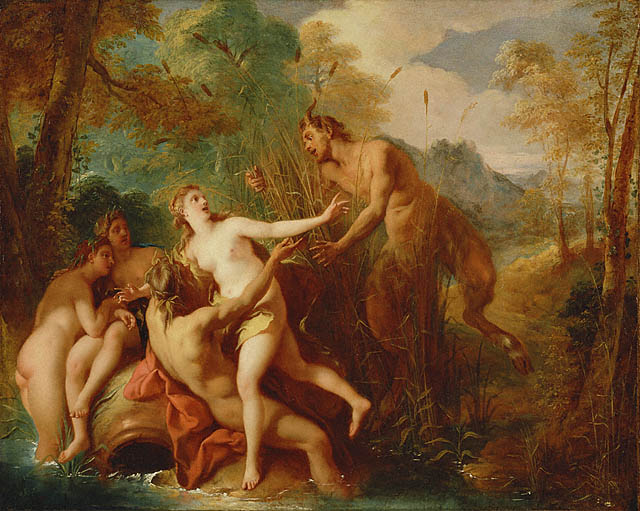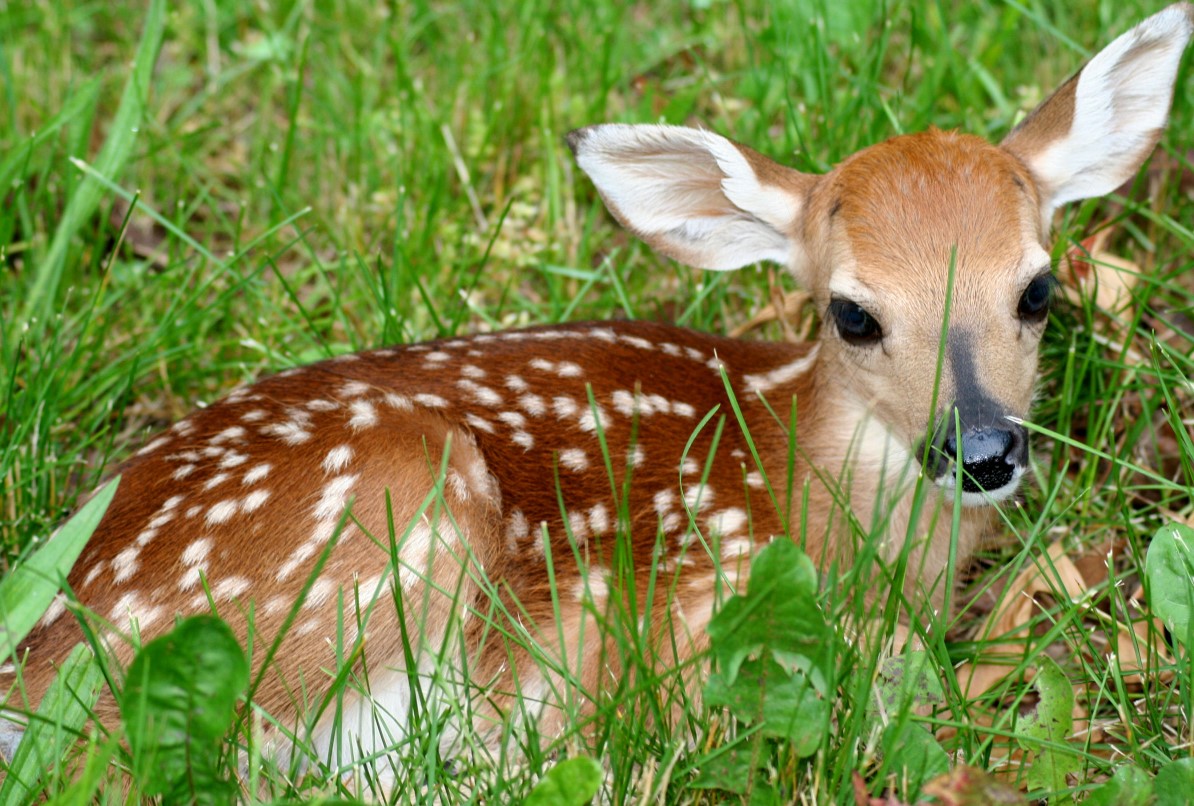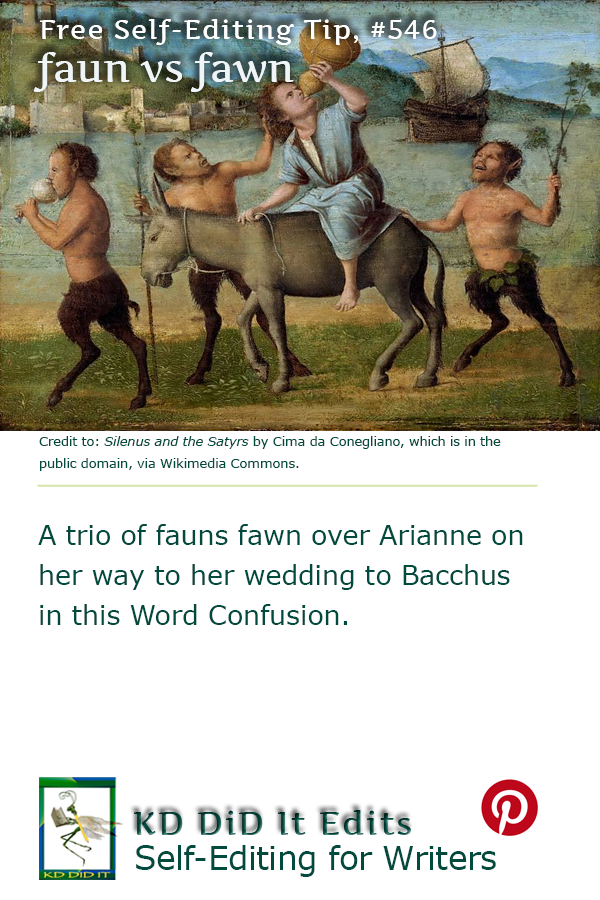Revised as of
17 Nov 2022
I’m pretty sure that “young faun frolicking amongst the does” was not the mythological beast that’s half-man, half-goat, ahem, since most fauns prefer to frolic amongst naked females. Hmmm, maybe it is my wrong interpretation? After all, those does are “naked females” . . .
I suspect, though, that the author meant baby deer, i.e., fawns who were frolicking amongst their mothers, i.e., the does.
This Word Confusion pair is an heterograph.
Word Confusions . . .
. . . started as my way of dealing with a professional frustration with properly spelled words that were out of context in manuscripts I was editing as well as books I was reviewing. It evolved into a sharing of information with y’all. I’m hoping you’ll share with us words that have been a bête noire for you from either end.
If you found this post on “Faun versus Fawn” interesting, consider tweeting it to your friends. Subscribe to KD Did It, if you’d like to track this post for future updates.
| Faun | Fawn |
|---|---|

Pan and Syrinx was painted by Jean François de Troy and is in the public domain, via Wikimedia Commons. — Pan is the Greek version of a faun. |

Fawn in Grass by ForestWander of ForestWander Nature Photography is under the CC BY-SA 3.0 license, via Wikimedia Commons. |
| Part of Grammar: | |
| Noun
Plural: fauns, fauni |
Noun 1; Verb, intransitive 1, 2 Plural for the noun: fawns Third person present verb: fawns |
| [Roman mythology] One of a class of lustful rural gods, represented as a man with a goat’s horns, ears, legs, and tail
[Greek mythology] Equivalent to the god Pan, satyrs |
Noun: A young deer in its first year 1 A light yellowish-brown color Verb, intransitive: [Of a person; often followed by on or upon] Give a servile display of exaggerated flattery or affection, typically in order to gain favor or advantage
|
| Examples: | |
| Mr. Tumnus is a faun who appears in C. S. Lewis’ The Chronicles of Narnia.
While Grover, in Percy Jackson & the Olympians, is a satyr, Don, in Rick Riordan’s Son of Neptune, is a faun. “Though fauns and satires have human heads and ‘therefore presumably have the capacity for advanced reasoning, their half-animal natures suggest that their behaviour is governed by their baser physical instinct” (Brown, 57). |
Noun: Oh, did you see that cute fawn in the backyard! Check out the fawn checked suit Marian is wearing. Does are getting prepared to feed themselves and the developing fawn through the harsh cold of winter. Verb, intransitive: They were always fawning on the President. The fawning of a deer effects their seasonal patterns and habits. That Fido fawns all over you. |
| Derivatives: | |
| Adjective: faunlike Noun: fauna, Faunus |
Adjective: fawning, fawnlike Adverb: fawningly Noun: fawner, fawningness |
| History of the Word: | |
| Late Middle English from the name of the pastoral god Faunus. |
|
C’mon, get it out of your system, bitch, whine, moan . . . which words are your pet peeves? Also, please note that I try to be as accurate as I can, but mistakes happen or I miss something. Email me if you find errors, so I can fix them . . . and we’ll all benefit!
Satisfy your curiosity about other Word Confusions on its homepage or more generally explore the index of self-editing posts. You may also want to explore Book Layout & Formatting Ideas, Formatting Tips, Grammar Explanations, Linguistics, Publishing Tips, the Properly Punctuated, Writing Ideas and Resources, and Working Your Website.
Resources for Faun versus Fawn
Apple Dictionary.com
Brown, Carmen. “Animals as Human Exemplars”, in The Mark of the Beast: The Medieval Bestiary in Life Art and Literature. Debra Hassig (ed.). 57. London: Garland Publishing, 1999. Print.
Pinterest Photo Credits:
Silenus and the Satyrs by Cima da Conegliano is in the public domain, via Wikimedia Commons.


